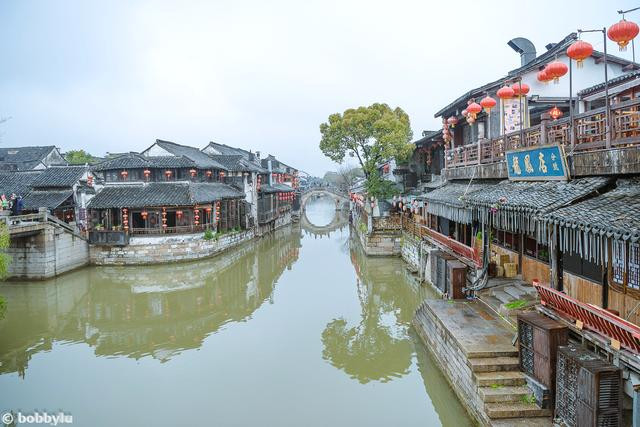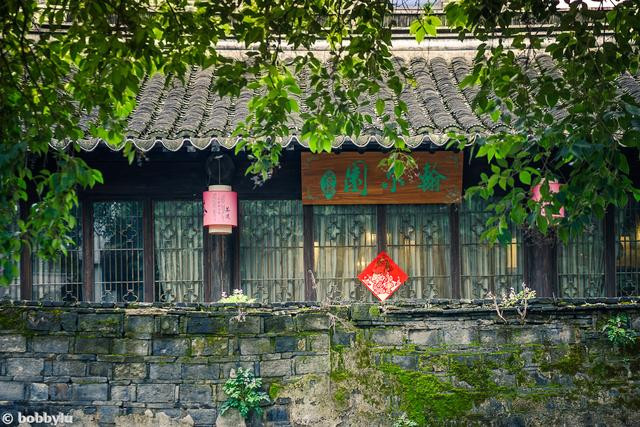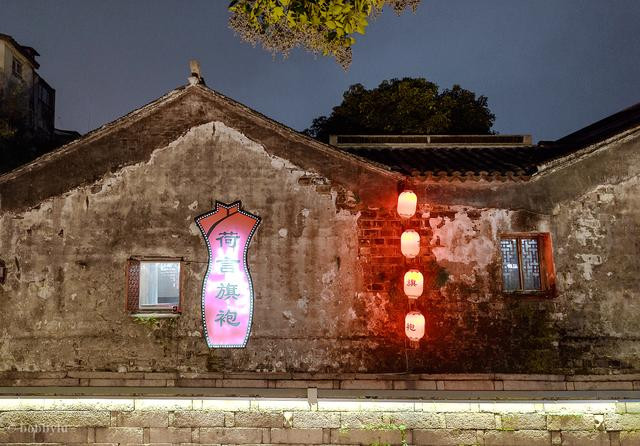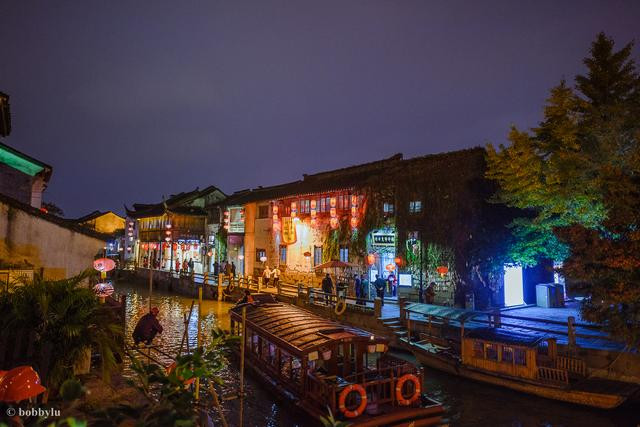Ancient towns with different water towns reveal similar original flavors of Jiangnan. Go there to be in a daze and feel comfortable
Compared with the freehand landscapes like famous mountains and rivers and rivers, the ancient towns, water towns and small bridges and flowing water in Jiangsu and Zhejiang are more detailed and even thought-provoking... Moreover, in such an ancient town living by the water, no matter when the four seasons are in place, there is no need for dawn or night. The freshness has an ancient atmosphere, and the tradition is mixed with the rhythm of the times. It can be said that it is everywhere. And it doesn't matter whether you are quiet or active. I think as long as you have enough time, and as long as you are willing to stay here all day, it will not be a problem...


I have visited many ancient towns in Jiangsu and Zhejiang provinces, whether they are famous or unknown; I have passed by intentionally or unintentionally, or come here specially for fame. Moreover, in different seasons all year round, I found a similar artistic conception and feeling in these ancient towns, that is, comfort and leisure, or a sense of practicality and comfort. It doesn't care which ancient town it is, what kind of scenery is in front of you, and what kind of noisy environment is around you. As long as you have time and you are willing, you can be in a daze anywhere...


During the two trips to Xitang, one time was at night, I simply browsed through the lights and bustle of people here, and then slept naturally in the surprisingly quiet environment after midnight. The other time was during the day. From morning to evening, I traveled almost everywhere here, not all because I learned that this is one of the six ancient towns in Jiangnan, nor because Mission Impossible 3 was filmed here. After all, the scenery here vividly interprets the pictures and beauty of small bridges and flowing rivers and houses in the Jiangnan area.


Especially from night to early morning, if you go to bed late or get up early, you will be completely attracted by the unique elements and symbols of the Jiangnan Water Town that are not unique here. Thousands of years of history known as "Wu Gen Crossing Corner", coupled with the mixture of modern elements, pictures of both ancient and present have come one after another, but none of them can escape the full fireworks atmosphere here. Even if it is gradually lively and noisy after early morning, if you are willing to continue to experience that kind of comfort, it seems that the bustling and lively here has nothing to do with you! You can continue to stop and walk, or dive into the alley and deliberately let yourself get lost in broad daylight...

Pingjiang Road, Suzhou City, Jiangsu Province, which is different from Xitang but has similarities, is still a street near the water, or you can also call it a small road along the river. At first glance, it sounds like they are across provinces and cities, but they are only about an hour's drive apart. The same thing is that they are all built along the river, but the difference is that houses living on the water are lined up in Xitang. On Pingjiang Road, most of the rivers along the river are commercial entities. But even so, the prosperity and commercialization of this more than 1,600-meter water street are far lower than that of Xitang.


Although this main street named Pingjiang Road is not long, the side alleys on both sides are also densely packed in the streets and alleys on both sides of the river like ox hair. The main street is famous for its "parallel water and land and adjacent river streets." Although the main street is not long, there are more than a dozen ancient buildings across it. The ten ancient wells confirm the ancient name of this place once named "Shili Spring". The reason why Pingjiang Road is mentioned is because it is also an ancient street in Linshui with a long history. The water town pattern that has lasted for nearly a thousand years is still well preserved, and the buildings in the streets, street organization and even the general pattern are basically consistent with the original state.


Renovated buildings as old as before, low-key and unpretentious bamboo fences and wooden doors, and rectangular bluestone slabs and cobblestone paved roads. Deep into it, the tranquility and simplicity; the pure and ground-to-earth atmosphere of life rush towards you, and there is a very different atmosphere that is isolated from the turmoil and turmoil of the outside world! The impetuous content is not often found in this ancient street and alley. On the contrary, the shops with a literary atmosphere or the clubhouses with carefully carved doors and walls can be seen that what seems to pay more attention to here is the meticulous thinking of the craftsmen of Jiangnan houses and the expression of the beauty of the garden. The beauty of the garden is brought to the extreme...

While walking on Pingjiang Road, there are also modern entertainment venues such as bars or karaoke rooms. But every time you walk not far away, what becomes more melodious and even goes up the beam is a song of guqin and then a song of silk bamboo... What you see and hear more is the Sunan minor song sung in the soft dialect of Wu Nong or Suzhou Pingtan.

Go into a Pingtan club at random, order a pot of fragrant tea, and serve a serving of melon seeds or dried fruits. We are already dressed up, just waiting to appear on the stage! There are two people who perform together, and there are also singles who play and sing. Regardless of whether they change or not, Sanxian and pipa are naturally indispensable. Sometimes the sound is beautiful, with both hardness and softness, sometimes it is high-pitched, gorgeous and passionate... But whether it is a single person or a double person, whether it is a historical romance of gold and iron horses or a folk story of love for children, most of the songs can be interpreted vividly and vividly.

And if you want to stroll through the streets and alleys of Pingjiang Road, many narrow streets and alleys will appear one by one as you walk. Xuanqiao Lane, Chuanfang Lane, Donghuqiao Lane, Caohuxu Lane, Dingxiang Lane, Shilin Temple Lane... Streets, alleys, alleys, or doorways, households all have their own long or short stories to tell. No matter whether the alleys are tortuous or not or whether they are open to the secluded world, they can reveal every bit of Soviet-style life and every aspect of market life...

Let's talk about Shantang Street, which is only four blocks away from Pingjiang Road. Just like Pingjiang Road, they all have the blessing of Suzhou's famous gardens. Pingjiang Road connects to the north of Humble Administrator's Garden, which is a masterpiece of Jiangnan classical gardens, while Shantang Street connects to the tiger hills known as the "No. 1 scenic spot in Wuzhong" in the west. Shantang Street has a total length of 3600 meters, about 7 miles long. Therefore, in ancient times, there was a saying of "Seven Miles Shantang to Tiger Hill".

Shantang Street is also a famous cultural street with a history of more than a thousand years. It is also a prosperous tourist and commercial street today. In the first chapter of "Dream of the Red Chamber", Cao Xueqin called the Changmen and Shantang areas "the most prosperous and romantic places in the world of mortals." In the folk songs sung among the streets, Shantang Street is described as follows: "There is heaven above, and Suzhou and Hangzhou below. Hangzhou has West Lake and Suzhou has mountain ponds. Two good places, infinitely beautiful scenery."...


The same water and land parallel, the same people live under the water. Shantang Street is a thousand-year-old street known as "the epitome of old Suzhou and the window of Wu Culture". What makes people linger more in Shantang Street is not only the "most prosperous and romantic place in the red world" described by Cao Xueqin; it is not just the favorite place of emperors, monarchs, literati and literati; it is because when the great poet Bai Juyi was appointed governor of Suzhou, in order to facilitate transportation and prosper the economy, he never wanted to dig a mountain pond, but he dug out a beautiful landscape and created "the most beautiful Suzhou Street in the world"! The vertical and horizontal winding of the river and the parallel interweaving of the land roads here form a unique architectural structure on Shantang Street supported by wooden piles. The flowers and trees on both sides of the strait and the ancient bridges that are either flat or arched across the river have created this old historical and cultural street, which is mainly built in the Ming and Qing Dynasties and the Republic of China.


Although I only talked about three water towns among the many old streets and ancient towns in the Jiangnan water town here, although they look roughly the same on the surface but are different in detail, the more nuanced similarities are like eating a meat dumpling in any old street, or a rice dumpling. It's more like a plate of fragrant beans and a pot of aged rice wine that you can buy everywhere, they are both so original and can make people have endless aftertaste...
Previous Article:Fushui Villa is a paradise for talented and beautiful people
Next Article:Yuhua Scenic Spot, Climb the Second Peak of Taihu Lake (Part 1)-Suzhou 3rd (2)
